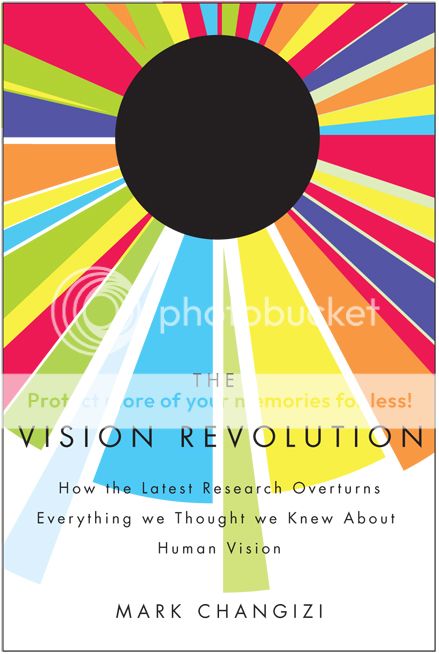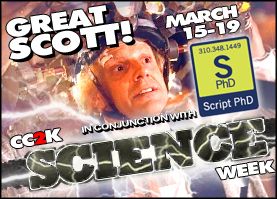From The Lab: Google World Science Fair and a New Generation of Idea-Makers
Apr0

The Google Science Fair: the first-ever global internet science competition is sure to have a tremendous impact on science education and innovation.
In his State of the Union speech in January, US President Barack Obama proclaimed that “we need to teach our kids that it’s not just the winner of the Super Bowl who deserves to be celebrated, but the winner of the science fair.” A noble (and correct) assessment, to be sure, but one mired in numerous educational and cultural obstacles. For one thing, science fairs themselves are at a perilous crossroads. A New York Times report issued in February stated that not only is participation in science fairs among high school kids falling, but that the kind of creativity and independent exploration that these competitions necessitate is impossible under current rigid test-driven educational guidelines for teaching mathematics and science. Indeed, an interesting recent Newsweek article on “The Creativity Crisis” conveyed research studies showing that for the first time, American creativity is declining. How appropriate, then, that this April (national math education month) brings the culmination of the Google World Science Fair, the first ever competition of its kind transpiring online and open to lab rats from all over the globe. ScriptPhD.com discusses why this could be a game-changer for the next generation of young scientists, under the “continue reading” cut.
From The Lab: A Future Barely Glimpsed
Oct3

A giant laser chamber being attended to by a scientist at Livermore's National Ignition Facility.
You can always tell you’ve gone too far when you reach the wind farms. They populate the barren wastes of California’s northern interior, rows of them spinning atop camel-haired hills starved of moisture to slake the thirst of the Los Angeles glitterati. These motionless pinwheels are an ironic green afterthought to the ecological disaster that embraces the Interstate-5 freeway: now that we’ve created the dust bowl we may as well use the wind to power our air filters. There’s more than wind and dust out here. This is where they put the kinds of facilities the government doesn’t want people snooping around in. Lawrence Livermore National Laboratory is one of them—a secretive development center for our nation’s nuclear arsenal during the Cold War. Here in Livermore, the world’s finest physicists are on the verge of a breakthrough that could power entire cities on a bathtub full of water. The National Ignition Facility, also known as the world’s largest laser, is on the cusp of achieving the first break-even nuclear fusion reaction. NIF is the U.S. Department of Energy’s Sagrada Familia. If successful, the four billion dollar facility will be the first ever to demonstrate Ignition: a fusion reaction that releases more energy than was put into it. The energy, national security, economic and environmental ramifications for the United States, if not the world, would be staggering. ScriptPhD.com’s Stephen Compson gained ultra-exclusive access to the normally reclusive facility, including tours, interviews, and a peek at the lasers that could hold the key to the United States’s global rebirth. With nuclear fusion on the brink of break-even, Stephen recounts we tour the world’s next scientific revolution.
Guest Post: Is Brain Training Real?
Sep3

The brain's neuron, a remarkably plastic, trainable cell.
Each of the brain’s 100 billion neurons has somewhere in the realm of 7,000 connections to other neurons, creating a tangled roadmap of about 700 trillion possible turns. But thinking of the brain as roads makes it sound very fixed—you know, pavement, and rebar, and steel girders and all. But the opposite is true: at work in our brains are never-sleeping teams of Fraggles and Doozers who rip apart the roads, build new ones, and are constantly at work retooling the brain’s intersections. This study of Fraggles and Doozers is the booming field of neuroplasticity: how the basic architecture of the brain changes over time. Scientist, neuro math geek, Science Channel personality and accomplished author Garth Sundem writes for ScriptPhD.com about the phenomenon of brain training and memory.
Guest Post: Can Creativity Be Measured in a Laboratory?
Aug5

Scientists are becoming more interested in trying to pinpoint precisely what’s going on inside our brains while we’re engaged in creative thinking. Which brain chemicals play a role? Which areas of the brain are firing? Is the magic of creativity linked to one specific brain structure? The answers are not entirely clear. But thanks to brain scan technology, some interesting discoveries are emerging. ScriptPhD.com was founded and focused on the creative applications of science and technology in entertainment, media and advertising, fields traditionally defined by “right brain” propensity. It stands to reason, then, that we would be fascinated by the very technology and science that as attempting to deduce and quantify what, exactly, makes for creativity. To help us in this endeavor, we are pleased to welcome computer scientist and writer Ravi Singh’s guest post to ScriptPhD.com. For his complete article, please click “continue reading.”
PODCAST: Professor Brian Cox and the ‘Wonders of the Solar System’
Aug0

Our solar system, a true wonder to behold! Image © NASA, all rights reserved.
“I think we’re living through the greatest age of discovery our civilization has ever known,” declares British physics superstar Professor Brian Cox as a preamble for each episode of The Science Channel’s BBC import Wonders of the Solar System. Episode by episode, Dr. Cox deconstructs our wondrous Universe one focus at a time—the Sun, the Big Bang, life on other planets. But he does something even more important. He infuses his own obvious enthusiasm and passion for his field in each experiment and factoid. As a viewer, you can’t helped but be absorbed in the intergalactic vortex of knowledge. The timing of this mini-series and emergence of Cox’s exuberant personality could not be better. Funding for NASA missions has been cut dramatically, with an ongoing re-evaluation the role space exploration should play in the national budget and science ambition. American viewers should get used to Cox as a modern-day Carl Sagan, because his star is rising fast. ScriptPhD.com was extraordinarily fortunate to sit down with Dr. Cox in Los Angeles for a one-on-one podcast about the show, the current state of space exploration, and what is possible to achieve experimentally if we only try. My conversation with the inspirational, eloquent and brilliant Brian Cox, along with our review of Wonders of the Universe, under the “continue reading” cut.
Guest Article: Beauty and the Building Blocks…
Jun0

The building blocks of life. Photograph courtesy of Dr. Ron Zuckermann
…a nanoscientist’s quest to mimic Nature’s molecular blueprints
Have you ever found yourself entranced by the exquisite beauty and complexity of living things? Like the intricacies of a budding flower, or the mesmerizing patterns on a butterfly’s wing? Have you ever wondered: “what are living things made of?” Are these materials just as beautiful if we were to zoom way way in and look at the actual molecular building blocks that make up life? Take a look at the interactive link The Scale of Things to see just how small the building blocks of life really are! Well the answer is “OMG – totally!” All living things share a ubiquitous set of molecular building materials we call proteins, and they are absolutely stunning! They are not only smashingly beautiful to look at, they are capable of performing a mind-numbing myriad of very intricate and complex functions that are essential to life. In a very special guest post, leading nanoscience Professor Ron Zuckermann of the renowned Lawrence Berkeley National Laboratory recounts his life’s mission as a chemist to try and build artificial microscale sheets made up of nature’s very own building blocks—proteins. Everything you wanted to know about what nanotechnology is, exactly, why engineering proteins is the science of the future, and what we plan to use these discoveries for, under the “continue reading” cut.
Guest Article: The Idea-Monger: No Genius Required by Mark Changizi (Podcast)
May5

The Vision Revolution by Mark Changizi. ©2010 BenBella Books, all rights reserved
Dr. Mark Changizi, a cognitive science researcher, and professor at Rensselaer Polytechnic Institute, is one of the most exciting rising stars of science writing and the neurobiology of popular culture phenomena. His latest book, The Vision Revolution, expounds on the evolution and nuances of the human eye—a meticulously designed, highly precise technological marvel that allows us to have superhuman powers. You heard me right; superhuman! X-ray vision, color telepathy, spirit reading, and even seeing into the future. Dr. Changizi spoke about these ideas, and how they might be applied to everything from sports stars with great hand-eye coordination to modern reading and typeface design with us in ScriptPhD.com’s inaugural audio podcast. He also provides an exclusive teaser for his next book with a guest post on the surprising mindset that makes for creative people. Read Dr. Changizi’s guest post and listen to the podcast under the “continue reading” cut.
Guest Article: A Pop-Culture Science Lesson
Mar0

All right class, settle down, settle down. My name is Mr. Ross, but you may call me BR. Welcome to Pop-Culture Science 101. I know what many of you are thinking: “Science is boring; I just don’t get it.” I can understand those sentiments. But that’s only because of the ways you’ve been taught in the past. Today is going to be different. On this, the third day of the Science Week collaboration between ScriptPhD and CC2K, we decided to have a bit of silly fun and cover a couple of traditionally esoteric science topics from an angle I doubt any of you have considered before—pop culture icons. So get out your notebooks and pens, today’s lesson begins now! Please click “continue reading” for more.
INTERVIEW: Engineering Professor and Caprica Science Consultant Malcolm MacIver
Mar6

ScriptPhD.com is extraordinarily proud to present our first ever Science Week! Collaborating with the talented writers over at CC2K: The Nexus of Pop Culture and Fandom, we have worked hard to bring you a week’s worth of interviews, reviews, discussion, sci-fi and even science policy. We kick things of in style with a conversation with Professor Malcolm MacIver, a robotics engineer and science consultant on the SyFy Channel hit Caprica. While we have had a number of posts covering Caprica, including a recent interview with executive producer Jane Espenson, to date, no site has interviewed the man that gives her writing team the information they need to bring artificial Cylon intelligence to life. For our exclusive interview, and Dr. MacIver’s thoughts on Cylons, smart robotics, and the challenges of future engineering, please click “continue reading.”
Love is a Many-Splendored Algorithm
Feb3

You spot someone across a crowded room. There is eye contact. Your heart beats a little faster, palms are sweaty, you’re light-headed, and your suddenly-squeamish stomach has dropped to your knees. You’re either suffering from an onset of food poisoning or you’re in love. But what does that mean, scientifically, to fall in love, to be in love, to stay in love? In our special Valentine’s Day post, Editor Jovana Grbić expounds on the neuronal and biophysical markers of love, how psychologists and mathematicians have harnessed (and sometimes manipulated) this information to foster 21st Century digital-style romance, and concludes with a personal reflection on what love really means in the face of all of this science. You might just be surprised. So, Cupid, draw back your sword… and click “continue reading” for more!

















